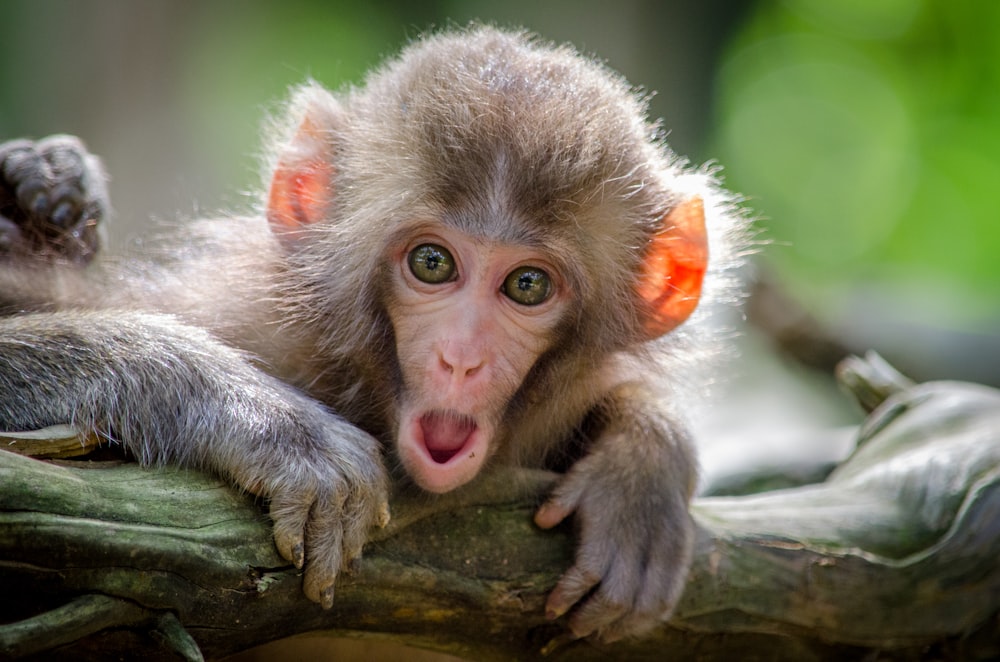Analogy/Homology
1. For the homologous trait provide the following information.
a. Two different species that possess the homologous trait are human beings and monkeys. The tailbone in human beings is a homologous trait, it gets its name "tailbone" due to the fact it is a homologous structure to the beginning of tails. Such as the tails that monkey's have. Human Beings have lost the original function of their tailbone through evolution. Human Beings now have a coccyx, which is very similar to a tail, however the coccyx serves no purpose. Part of this is the fact that Human beings are bipedal, and have no need for a tail. Monkey's on the other hand, are bipedal, yet still use their tails for things such as grasping objects such as branches and food, so their tail still serves a purpose.
b. Monkey's have what is called a prehensile tail. A prehensile tail has adapted to grasp or hold objects, full use of a prehensile tail includes being able to manipulate objects, and aid the monkey in finding and eating food. The human being tail bone is now a vestigial trait that humans no longer have a use for. There are several theories as to why humans only have a tail bone such as, we are bipedal, we don't need a tail to brush away bugs, help our balance or to grab things, so over time there was no need for humans to have a tail. The tailbone is formed of three to five vertebrae, the last piece is a tiny nodule of bone. A monkey's tail is made of vertebrae that are more flexible.
c. Human beings and Monkey's are both primates that descended from a common ape ancestor over six million years ago, we share a common ape ancestor with chimpanzees and chimpanzees are the closest primate relative to humans. Like Human beings, chimpanzees do not have tails. However, the ape species includes humans, monkey's and chimpanzees, so the Ape is our common ancestor.
d.
. 

2. For your analogous traits provide the following information.
a.The penguin and the fish are examples of species with analogous traits. Penguins and fish both have fin like structures, yet one of these are a bird and one is a fish. Therefore they are not related through ancestors or anything. The main function of a fish is to swim, and they have fins located in different places to help them move through the water, stop, as well as shift left or right, so the fin serves a lot of purpose for a fish. A penguin also uses their fins, for gliding through water. Unlike the fish, the penguin can rotate their fins in different directions, which help their fins act like a paddle. Penguins have fins instead of wings, because a wing would hinder their swimming.
b. Penguins are part of the bird family, they even have feathers like birds do, however the feathers are highly dense and very short. Penguins also lay eggs, and are warm blooded. Over time penguins wings adapted to become fins (flippers), which they use for swimming. Penguins rely on swimming for food, so developing these fins was more important then growing wings to fly. Fish on the other hand are cold blooded and cannot survive on land like penguins do. The fish fin serves many functions, their dorsal fin prevents them from rolling over, their pectoral fin are used for steering. So the fins in both penguins and fish serve entirely different purposes. The one similarity is both use their fins for guidance through the water.
c. Fish were here on earth long before birds were. Amphibians evolved from fish, over 360 million years ago, and then mammals and birds evolved from reptile like ancestors so the common ancestor would be a fish from over 360 million years ago. Fish had fins, so this would be the analogous trait that penguins now have. The fish and the penguin are not related as one is a fish, cold blooded and one is a bird, warm blooded. They are from entirely different species. Penguins and fish are analogous to each other, based upon the structure of their fins. The penguins fin is used to help navigate through the water, ice and snow, and the fish's fin is used to navigate only through water.
d.
.


